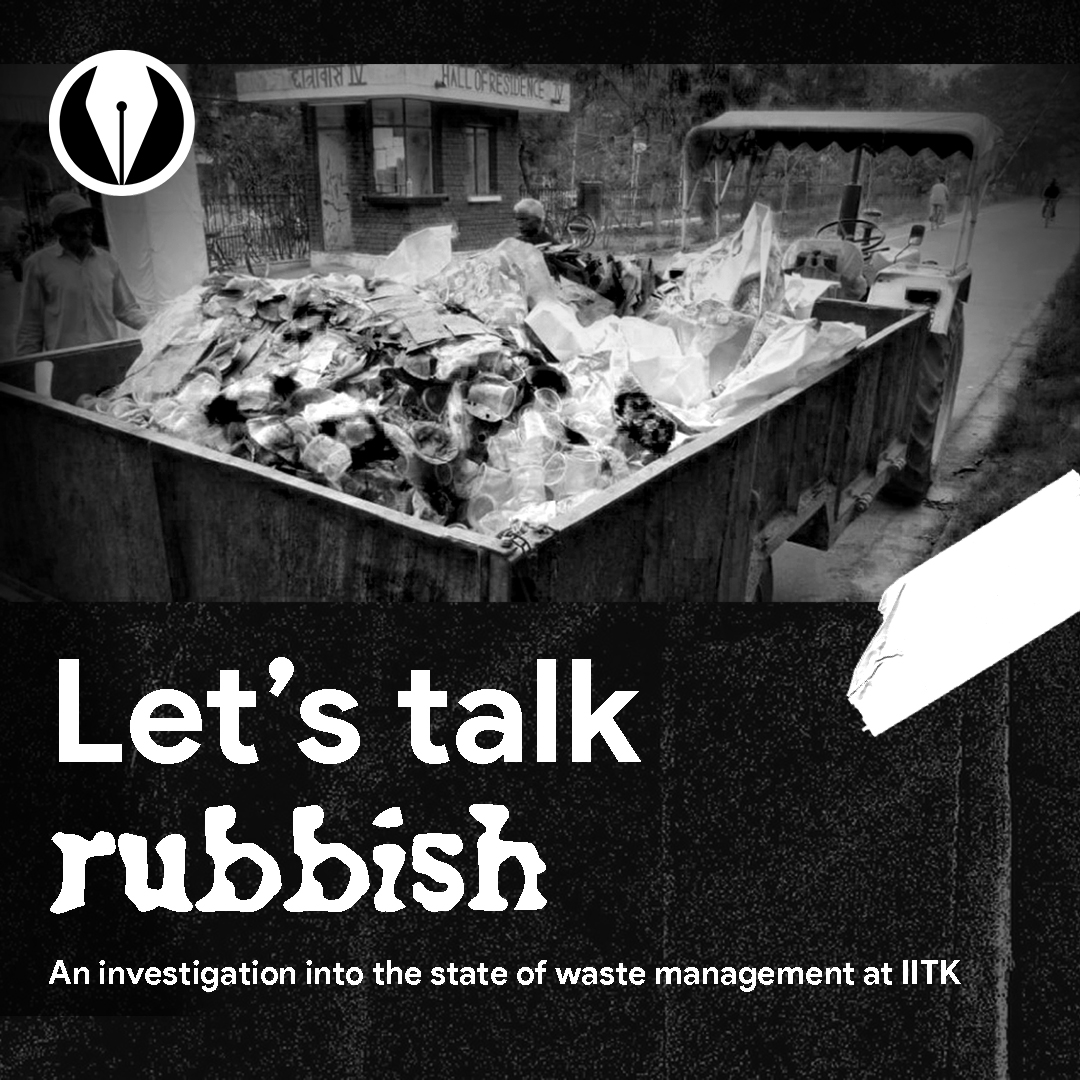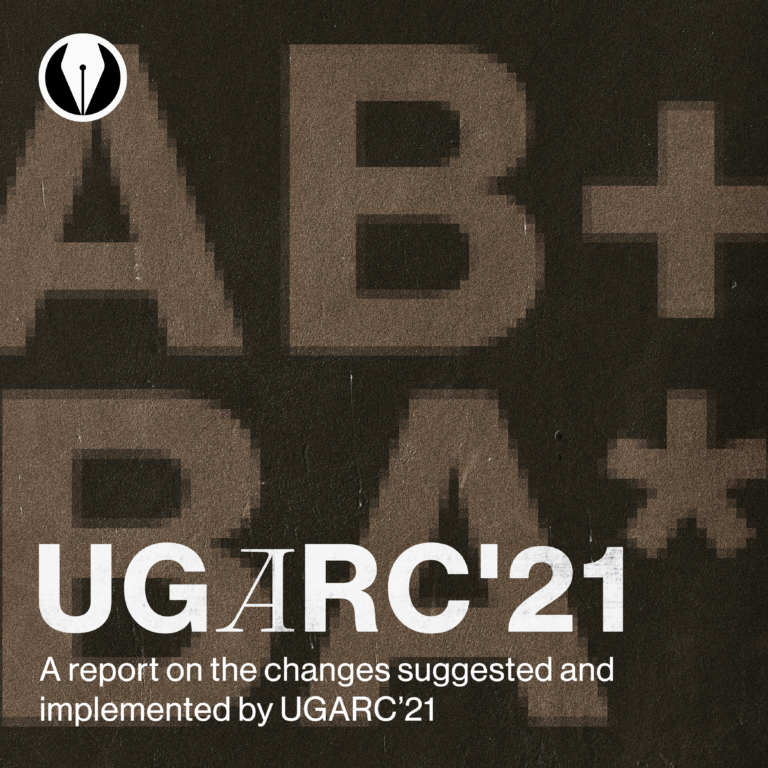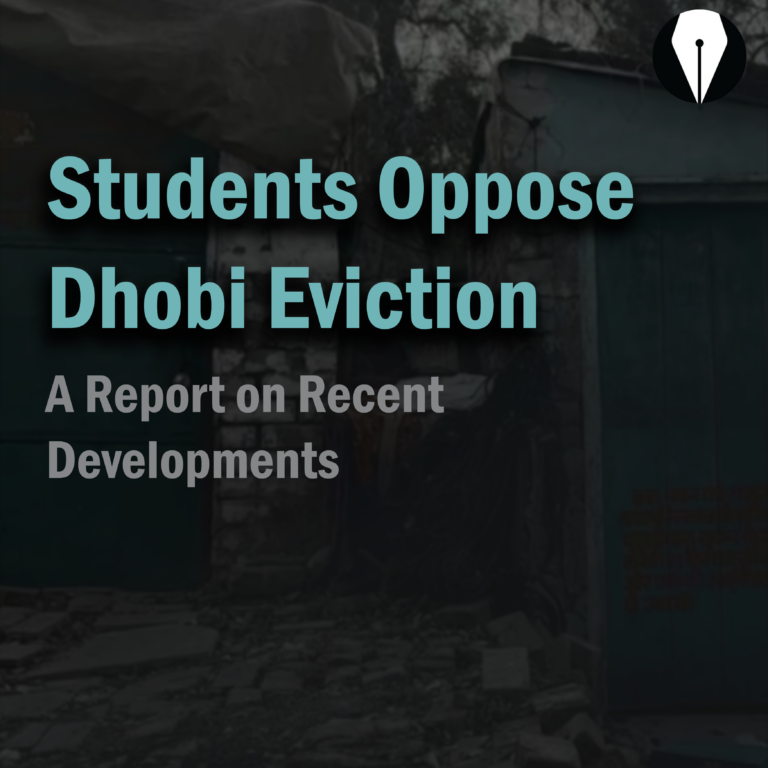We would like to express our gratitude to Prof. Rajat Mittal, Prof. Abhas Singh, and Mr. Hari Shankar, who generously gave their time and provided us with crucial information. Without their input, this article would not have been possible. We extend our sincere thanks to each of them for sharing their expertise, perspectives, and experiences, which greatly enriched the content of this article.

Of the many significant features of a culture, a central one is how it handles the tension between purity and pollution. The distinction between ‘clean’ and ‘dirty’, is a consequence of the more fundamental distinction between ‘Good’ and ‘Evil’. The culture makes this duality known through its rituals, practices and attitudes. More importantly, it manifests itself in our relationship to what we consider ‘waste’.
We wish to inquire further into this idea. The notion that waste simply disappears from our perceptual reality – Leftover mess-food, coca-cola bottles, and chips packets – where do they disappear? Why must we ask this question? How are these concerns relevant to us as residents of a huge campus?
IIT Kanpur produces nearly 1.5 metric tonnes of waste from hostels every day, in addition to 350-400 kg of household waste. Our Campus, for all practical purposes, is a miniature township. Discarded waste by the community, leftover food from halls and eateries, debris from infrastructure projects, sludge from sewage treatment plants, refuse from horticulture activities and hazardous waste from laboratories – all of these require an elaborate and sustainable mechanism of waste management. To understand how our campus manages all of this waste, we must first understand the different types of waste generated on campus, and where they come from.
The waste generated on campus can be broadly classified into the following –
(1) Biodegradable Waste – This is primarily generated in hostel messes and the residential area of the campus. In hostel messes, biodegradable waste is generated when food is wasted by the students, the surplus food is thrown away and other organic waste is generated during the preparation of food. There are around 1200 houses in the residential area of the campus which not only generate biodegradable waste, a substantial amount of non-biodegradable and a tiny amount of hazardous waste.
(2) Non-Biodegradable Waste – This is generated in residential areas, hostel wing dustbins and public dustbins around campus. All kinds of plastic waste like packets, wrappers and pens, metallic waste and glass come under non-biodegradable waste.
(3) Horticulture Waste – Waste such as grass, fallen leaves and branches, dead plants are called horticulture waste.
(4) Hazardous Waste – This includes broken glass, tube lights and light bulbs, medicines, batteries, electronic waste etc. Hazardous waste is generated in residential areas as well as hostels but in a relatively smaller amount. Waste under this category cannot be dumped anywhere. If this comes in contact with water, several toxins are leached out which further percolate into the groundwater reserves.
(5) Lab and Hospital Waste – This includes various kinds of chemical and medical waste generated in labs and in the health centre. For example, corrosive and reactive chemicals, used syringes and needles, infectious waste, etc. This category of waste requires special treatment before getting discarded.
Waste management in our institute, therefore, is the co-responsibility of the administration – through systemic measures and technologies, and of the student residents – through conscious waste disposal. The pathetic state of waste management can be seen in heaps of litter around eateries and daily-extravagant wastage of mess food. Let us look at these separately, and in detail.
System of Waste Management
Our campus, for a very long time, was located on the outskirts of the city. Although the city over the decades has caught up, the institute had to develop and maintain their own services because the municipal services were not available to them. Hence, there are systems in place where each category of waste, as described earlier, is subject to different processes.
(1) Biodegradable Waste – A method called ‘drum composting’ is carried out to deal with biodegradable waste. The technology is called BHOOMI-the automated drum composting machine. was developed in IIT Kanpur itself in 2017 as a result of an experiment carried out by Prof. Abhas Singh and a PhD student Mr. Hari Shankar. This was implemented in residential areas and hostels in 2018 and 2019 respectively. Drum composting reduced the time taken for composting from 40-50 days to less than 17 days. This reduced the cost and increased the productivity of the composting process. The compost formed is used as organic manure for horticulture purposes. Currently, there are 16 drum composting sites on campus and around 1.5 tonnes of biodegradable waste is generated everyday on campus.
Before the invention of BHOOMI, the waste was taken by a contractor who segregated waste and carried out manual composting. When the erstwhile contractor stopped operations, there was no other contractor to turn to for a long time. During this time, the non-segregated waste was dumped in the ground near the Shilbi gate. The locals used to burn the waste during winter.
(2) Non-Biodegradable Waste – The institute has hired a company called J.T.N. Services to collect the non-biodegradable waste from residential areas, hostel wing dustbins, and public dustbins. The collected waste is then dumped by the company in the designated nagar nigam landfills.
(3) Horticulture Waste – This is collected in tractors and dumped in various empty places around campus where people do not go often.
(4) Hazardous Waste – This is collected from households every second Saturday at the new shopping complex by a contractor. There is no separate way of collecting this waste from hostels; thus, it is entirely up to the students to ensure that hazardous waste does not end up mixing with other kinds of waste.
(5) Lab and Health-Centre Waste – There is a unit near the airstrip in which waste of this kind is stored. When enough waste accumulates, a contractor is called. The contractor then takes the waste to a treatment plant. On the other hand, liquid chemical waste in labs is discarded in the sinks which ends up damaging pipes.
Individuals
In their formative years, the state of the physical environment students live in has a profound and impressionable impact on how they view the world. It is not without reason that most acclaimed higher education institutes in our country and abroad, have lush green and spacious campuses. IITs were envisioned to “set the trends in environmental upkeep of an organized human habitation and to serve as role models for the townships to emulate.” Ideally, in premier institutes like the IITs- stakeholders are supposed to be in harmony with their environment, become sensitive to it and make conscious efforts to keep it clean and sustainable. However, the status-quo shows us a different picture.
Mess food wastage
Each mess in our campus functions as a “community kitchen” where the cost of food is borne equally by all residents irrespective of their individual consumption. This means, the cost of wastage too is divided equally between all – so there emerges an ethical, community aspect to our participation in the mess.
In contrast, food purchased in the canteens, or ‘extras’ in the mess for that matter, are almost never leftover, because students pay directly and immediately for what they consume. This lack of tangible accountability, along with an acute absence of community consciousness, normalize the reckless wastage of food. Everyday, we come across sights of plates full of food, completely discarded. The effort to not waste food is minimal – take only as much or less than what you want to eat. Why, then, is wastage so rampant? Another aspect of this attitude makes itself visible in the heaps of litter outside campus eateries, in hostel corridors and outside canteens. One finds garbage everywhere around the dustbin on more than one occasion. Similar is the case with food on our mess plates. Since we see no immediate individual stake in wastage, what happens to the food later hardly demands our attention.
How do we combat this attitude? To start with, by making a conscious effort to challenge our default logic and voluntarily assuming the role of the ‘responsible resident’.
Student bodies like the HEC have to take initiative to set up constant reminders in and around the mess so that students are continually made aware of their responsibilities to the community.
The Way Forward
(1) Every hall can possibly start by having a waste management secretary and some volunteers. This helps by having individuals responsible for the following systems:
(i) Segregation of waste is the first step in the process of waste management. Segregating at source is the most effective way of doing it. A hall is autonomous so the secretary of the hall can talk to their waste collector, ask about the hall’s waste management and plan the process of segregation accordingly.
(ii) Every wing must have two dustbins, one for biodegradable waste and the other for non-biodegradable waste. They should make sure that the collection of biodegradable waste is done in drums followed by composting. For non-biodegradable waste, there can be a few dustbins where the waste will be collected and stored. The waste can be collected once a month.
(iii) Medicinal and hazardous waste can be collected once a month in every hall so that it can be treated properly in the treatment plant.
(2) Use of single-use plastics must be eliminated in a phased manner
(3) A waste management committee consisting of students, professors and staff must be formed. It will be convenient to have a forum for raising issues and having important discussions of waste management around campus.
In conclusion, premier institutes like IIT Kanpur, as technically advanced communities, have a unique opportunity to lead the way in developing and implementing sustainable waste management practices. By implementing the measures, we as a community can not only reduce our environmental footprint and improve public health but also, more importantly, set an example for others across the country to follow. Along with our contribution to solving contemporary global issues of solid waste management, we arguably have a moral duty and an ethical responsibility to pay attention to this issue and take the necessary steps.
Written by: Aarish Khan, Mutasim Khan
Edited by: Ayush Anand
Design by: Deekshansh Vardhan









